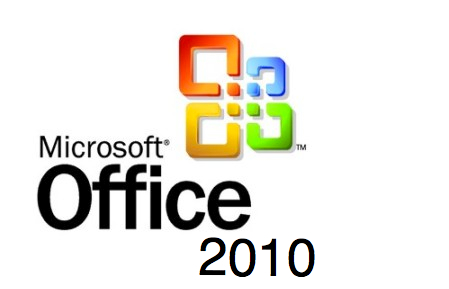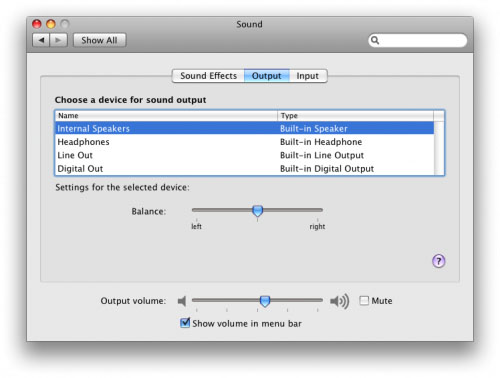We've updated this article for 2014 and turned it into a free downloadable Mobile Strategy eBook. Find out what your options are for mobile development and which platform is right for your business. Once you've decided, take a look at our Mobile Development courses and start learning an essential skill for 2014.
|
Last year we wrote about ‘the mobile future’. Well, that future has become the present. As a business owner, what are your options for entering the ever-growing mobile market? In the US, smartphones outnumber feature phones. In India, this year mobile web users will outnumber desktop web users. Not only is the mobile market growing but it’s becoming more profitable. Google recently added in-app subscriptions to the Play Store, PayPal is taking mobile to the high street and banks are getting in on the act led by Barclays Pingit. |
 |
Fears of security have been swept aside as mobile users worldwide devour information & entertainment on the go.
The opportunities for marketing are huge. Last year the mobile market was estimated to be worth $25-50 billion by 2015, but as China’s app market is valued at $35 billion those early figures massively undersell the mobile market.
Mobile at a Glance
Users can access content on their smartphone or tablet in two ways – via a browser or by downloading an app. You should be making sure that potential customers can access your content via one of these options:
- Browser – Websites (desktop, mobile & responsive) and Web Apps
- Application – Native Apps
So which one should you choose? Use our helpful guide to decide!
We run an Android App Workshop, teaching you how to design, develop and market apps for the two most popular mobile operating systems - with a combined market share of 82% between them!
Aaron Charlie
5 Feb 2014
Every SEO Person Needs This in their Link-Building Toolkit.
 Link building is the process of trying to manipulate the inbound links that are directly aiming towards a site. It is an essential part of an SEO campaign but a lot of SEO people do not use or have the essential tools to do the job properly and thoroughly. Even so, the people with the right tools still don’t use them to their full potential and are making life difficult for themselves.
Link building is the process of trying to manipulate the inbound links that are directly aiming towards a site. It is an essential part of an SEO campaign but a lot of SEO people do not use or have the essential tools to do the job properly and thoroughly. Even so, the people with the right tools still don’t use them to their full potential and are making life difficult for themselves.
If you want to learn more about building your own spreadsheet then take our Excel Training course ( we also offer advanced excel training), also if you want to learn more about Search Engine Optimisation, then try our SEO Training course in Brighton, Sussex.
I have created an Excel document and a Word document to help you with your link building campaign. The Excel document includes different worksheets with different lists in to enter your data as you go along. For data entry, Excel will always be a useful tool to use as it allows you to switch from cell to cell while entering data with ease.
Normally, link building is an on-going practice and from time to time it can get boring and repetitive, but if you keep it all organised then you will find it a lot easier. Also, if you need to get someone else to do the link building for you, with these resources, you can easily pass on what you have done and they can just pick up where you left off.
You can download the resources at the bottom of this page, but here’s a breakdown of what is in them and what you should be considering when starting your link building campaign -
Heather Buckley
1 Oct 2010
Every SEO Person Needs This in their Link-Building Toolkit.
 Link building is the process of trying to manipulate the inbound links that are directly aiming towards a site. It is an essential part of an SEO campaign but a lot of SEO people do not use or have the essential tools to do the job properly and thoroughly. Even so, the people with the right tools still don’t use them to their full potential and are making life difficult for themselves.
Link building is the process of trying to manipulate the inbound links that are directly aiming towards a site. It is an essential part of an SEO campaign but a lot of SEO people do not use or have the essential tools to do the job properly and thoroughly. Even so, the people with the right tools still don’t use them to their full potential and are making life difficult for themselves.
If you want to learn more about building your own spreadsheet then take our Excel Training course ( we also offer advanced excel training), also if you want to learn more about Search Engine Optimisation, then try our SEO Training course in Brighton, Sussex.
I have created an Excel document and a Word document to help you with your link building campaign. The Excel document includes different worksheets with different lists in to enter your data as you go along. For data entry, Excel will always be a useful tool to use as it allows you to switch from cell to cell while entering data with ease.
Normally, link building is an on-going practice and from time to time it can get boring and repetitive, but if you keep it all organised then you will find it a lot easier. Also, if you need to get someone else to do the link building for you, with these resources, you can easily pass on what you have done and they can just pick up where you left off.
You can download the resources at the bottom of this page, but here’s a breakdown of what is in them and what you should be considering when starting your link building campaign -
Heather Buckley
1 Oct 2010
If your business has recently upgraded to a new version of Microsoft Office you may have seen a noticeable drop off in productivity from your staff.
Versions of Office up to and including 2003 all had a relatively similar layout, with dropdown menus used to access the various functions. Users had become familiar with this layout and were comfortable with where to find the commands they needed to use.

Get up to speed with the new versions of Office with our Office 2010 Upgrade Training courses, we provide training on the whole Microsoft Office Suite of products, including Excel training, Advanced Excel Training, Access training, Advanced Access training, PowerPoint training, Outlook training and Project training courses.
With Office 2007 and 2010 the layout of all the Office Suite of products changed drastically with the introduction of the Ribbon. Commands are now accessed using the Ribbon, rather than the dropdown menus.
Once you know how to use it the new interface may be more intuitive, however staff that aren’t familiar with the Ribbon may have trouble finding the commands they used regularly in previous versions, leading to a drop in productivity as it takes longer to write a letter, create a presentation or spreadsheet.
To get you started here is our guide to the new Ribbon in Microsoft Office 2010.
We’ll use Word 2010 to illustrate the points but the principles are the same throughout the Office Suite of products.
There are three main components to the Ribbon

1: Tabs – each Tab relates to the core tasks you do in each of the Office Programs
2: Groups – each Group contains related commands, for example all the commands for formatting text are in the ‘Font’ group.
3: Commands – the commands allow you to carry out specific tasks like changing a font size or colour. The commands are arranged in groups.
Andy Trainer
28 Feb 2011
If your business has recently upgraded to a new version of Microsoft Office you may have seen a noticeable drop off in productivity from your staff.
Versions of Office up to and including 2003 all had a relatively similar layout, with dropdown menus used to access the various functions. Users had become familiar with this layout and were comfortable with where to find the commands they needed to use.

Get up to speed with the new versions of Office with our Office 2010 Upgrade Training courses, we provide training on the whole Microsoft Office Suite of products, including Excel training, Advanced Excel Training, Access training, Advanced Access training, PowerPoint training, Outlook training and Project training courses.
With Office 2007 and 2010 the layout of all the Office Suite of products changed drastically with the introduction of the Ribbon. Commands are now accessed using the Ribbon, rather than the dropdown menus.
Once you know how to use it the new interface may be more intuitive, however staff that aren’t familiar with the Ribbon may have trouble finding the commands they used regularly in previous versions, leading to a drop in productivity as it takes longer to write a letter, create a presentation or spreadsheet.
To get you started here is our guide to the new Ribbon in Microsoft Office 2010.
We’ll use Word 2010 to illustrate the points but the principles are the same throughout the Office Suite of products.
There are three main components to the Ribbon

1: Tabs – each Tab relates to the core tasks you do in each of the Office Programs
2: Groups – each Group contains related commands, for example all the commands for formatting text are in the ‘Font’ group.
3: Commands – the commands allow you to carry out specific tasks like changing a font size or colour. The commands are arranged in groups.
Andy Trainer
28 Feb 2011
Just a very quick post as this has been driving me mad since I got my new Power Mac using OSX. I had sound on the computer for most things but no sound on YouTube and some Flash animation.
Having a look around for the answer, as usual I was presented with lots of complicated fixes. I chose the simplest and it worked straight away with out having to download anything dubious!
Q: How do I get sound on Youtube on my Mac?
A: delete the /Library/Preferences/Macromedia folder
Simples ;)
If you are looking for PRINCE2 training, ITIL training, ISTQB training or MSP Training why not call and book a course in Brighton, Sussex. It's the place to be! Take a look at our full range of training courses.

No sound on Mac reset sound options
Heather Buckley
2 Mar 2011
Just a very quick post as this has been driving me mad since I got my new Power Mac using OSX. I had sound on the computer for most things but no sound on YouTube and some Flash animation.
Having a look around for the answer, as usual I was presented with lots of complicated fixes. I chose the simplest and it worked straight away with out having to download anything dubious!
Q: How do I get sound on Youtube on my Mac?
A: delete the /Library/Preferences/Macromedia folder
Simples ;)
If you are looking for PRINCE2 training, ITIL training, ISTQB training or MSP Training why not call and book a course in Brighton, Sussex. It's the place to be! Take a look at our full range of training courses.

No sound on Mac reset sound options
Heather Buckley
2 Mar 2011
Microsoft Project 2010 was released last year and many of our clients are upgrading to the new version. Our guest blogger this week is one of our MS Office trainers and she has put together a list of some of the bugs in Project 2010 and (most importantly!) ways of getting around them. In time these bugs will be ironed out with updates but for the time being they can be extremely frustrating if you encounter them.
To learn more about the Office Suite of products, see our Microsoft Office training courses, including MS Project training, Beginners Excel training and Advanced Excel training. If you are upgrading from a previous version, our Office 2010 Upgrade training course covers all the new features in Office 2010.
Bugs in Microsoft Project 2010
As a Microsoft Project trainer I was interested to see the new Project 2010 and how it compares to previous versions. I am always keen to find out what’s new with an application and what benefits it can bring to the users that I train, and how best to communicate these features. There are some great new features such as:
- The Team Planner - this enables you to click and drag work from one resource to another.
- The ability to use the drop down list in the Resource Names column in the Gantt Chart table to select more than one resource.
- An icon in the Indicators column in the Gantt chart table to indicate over-allocations. This saves you having to go a view such as the Resource Sheet to check for over-allocations.
- The ribbon interface which matches the other MS Office applications.
Whilst working with Project 2010, various bugs came to light and a quick “google” and a chat with some other Project trainers reassured me that it isn’t something that I am doing wrong and that I am not the only one to have discovered these problems. For the most part, these bugs affect the display only and if you dig deeper into the detail in other views, the data in the background is correct.
Look out for the release of the Service Pack, but in the meantime, here is a description of the bugs that I have discovered and my suggestions of how to get around them:
Andy Trainer
25 May 2011
